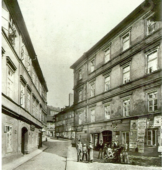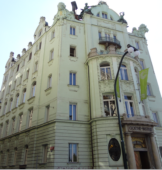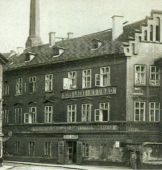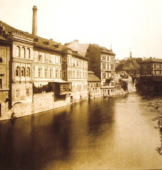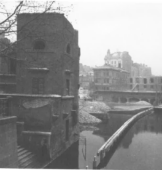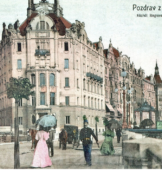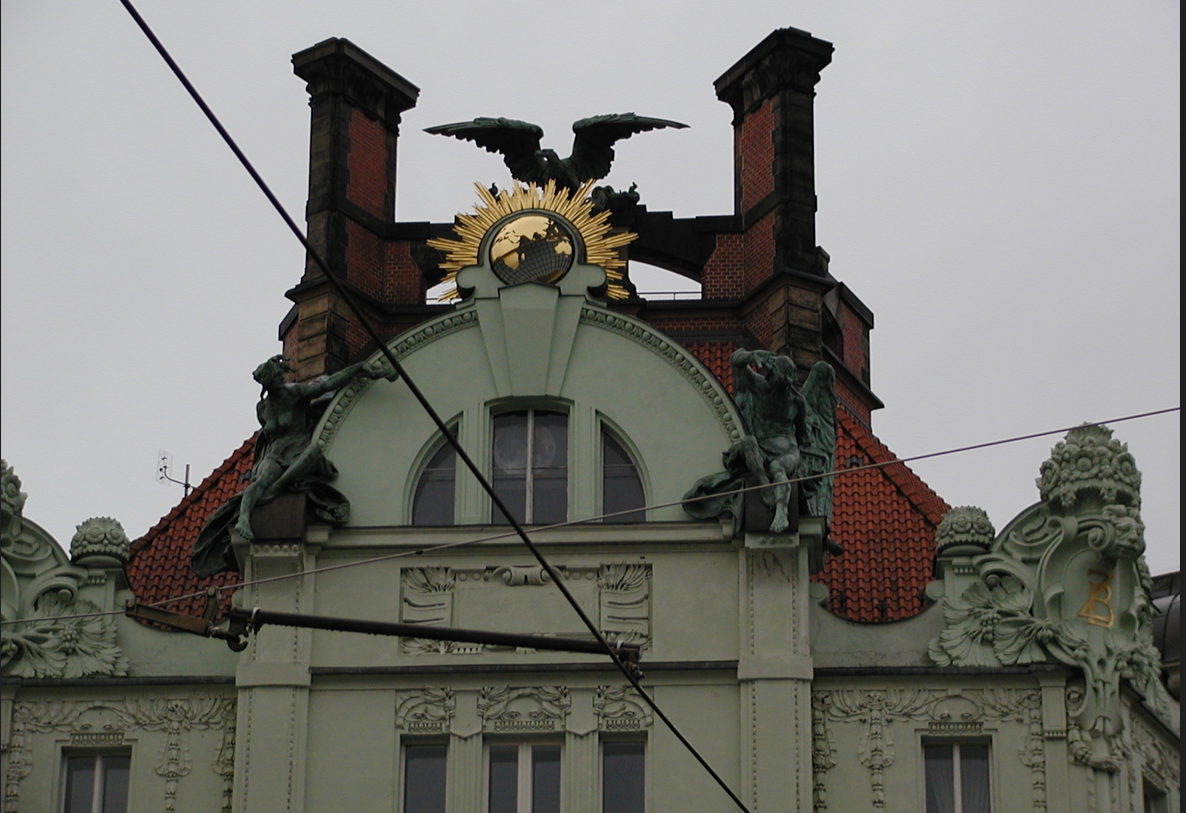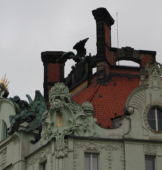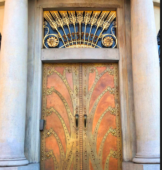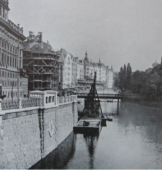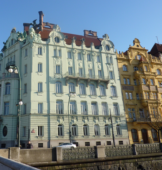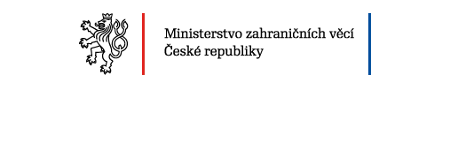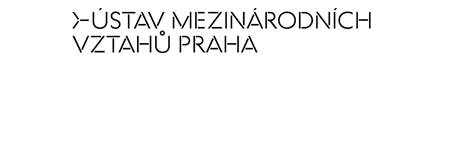There was a three-story house built on the foundation of a fifteenth century building on the place where there is a house n. 224 today. (Fig. no. 1A,B). Behind the National Theatre, on the area where street Na Struze meets Masarykovo nábřeží (Masaryk’s embankment) used to be a spa and a laundry with an access to the river on a wide staircase (Fig. no. 2 and 3). Together with other buildings, the spa was demolished during the sanitation of St. Adalbert’s (Vojtěšská) quarter. (Fig.no.4)
On the bank of the Vltava river grew new luxury residential buildings. The best architects and artists of the time took part in their creation. Thanks to that, Masarykovo nábřeží (Masaryk’s embankment) is today the nicest embankment in Prague. Street Na Struze begins precisely with our corner house built according to the plans of architect Jiří Stibral by builder František Schaffler and there was the headquarters of The First Czech General Insurance Bank. (Fig. no. 5).
The house is a wonderful example of art nouveau architecture. It is a four–story, axisymmetrical structure, decorated with many details. Sculptural decoration is the design of Ladislav Šaloun (the sculptor of Jan Hus statue in Old Town Square).
On the top of the gable is a gilded globe made of steel and on it copper continents can be seen. The globe is decorated with sun rays and situated between man and woman copper figures. Above the gable between so called „Gaudi“ chimneys there is an iron eagle with spread wings. Stylized gargoyls with draperis and flowers are in the corners of the house (fig.no. 6A,B). Under the windows on the front facade and also on the top of the side facades are stucco sculptures of girls’ faces. The entrance to the building is equipped with an amazing beautifully decorated all-metal door. (Fig.no.7). Only few original details have been preserved inside – for example art nouveau staircase railing connecting the first and second floor.
After World War II the bank was nationalized and later closed. The house became a seat of the Bulgarian embassy and then later became the embassy of GDR (German democratic republic) until year 1990.
In the year 1987 the building was declared a National Cultural Monument. Since 1991 the Goethe Institute has been located here. It is a cultural centre of the Federal Republic of Germany and its role is to support international cultural cooperation and education. There are classrooms, lecture halls, a library and a café.
The address of the house „Masarykovo nábřeží“ is the most frequently renamed embankment in Prague. It was first the Franz embankment (after the emperor Franz Josef), in 1912 it was Riegr, then Vltava, Heydrich and again Riegr, Gottwald and since 1990 it has had the name of the first Czech president T.G. Masaryk.
The part of St. Adalbert’s (Vojtěšská) quarter, which occupied the area along the river from Myslíkova street to the National Theatre, stood in the way of the planned connection of the embankment along the Vltava river. The river banks were unpaved and the whole area was often affected by floods that caused damage. So the sanitation passed relatively calmly, as the history of the district was not so turbulent compared to Josefov (the so called Jewish town of Prague). A raised embankment with a smaller floodplain was built. The new construction started opposite the Štítkovská water tower (next to today’s Galeria Mánes building) and continued towards the theatre. The building of the insurance bank was the last completed in this block. The saying ‘finis coronat opus’ (the end crowns the work) was fulfilled (fig.no. 8).

